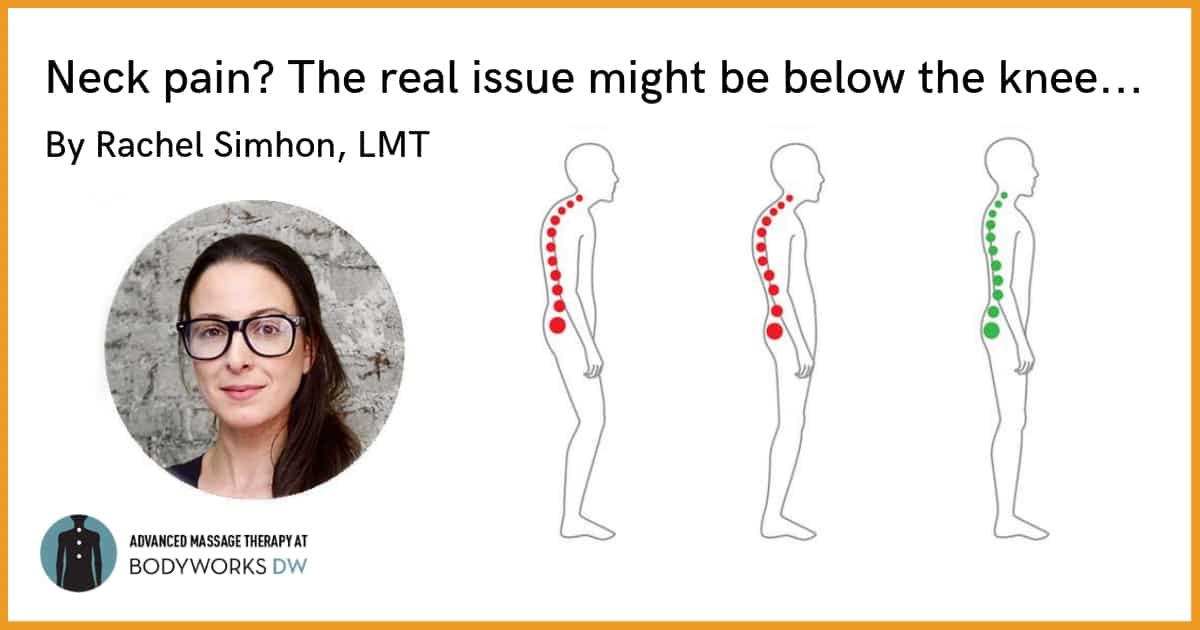Working Below the Knee May Help Your Neck Pain

Rachel Simhon, LMT and featured therapist of the month tells us why working below the knee can relieve neck pain. Don’t believe it? Take a look yourself!
Why did you get into massage therapy?
My background as a yoga and Pilates instructor specializing in pain management and injury rehabilitation inspired me to pursue a career in massage therapy. I’ve always been a very hands-on movement instructor. Manual therapy felt like a natural extension of the sort of work I was already doing. I also very much experience the world around me through touch! It made sense to take a step further, seeking formal training in a modality where I could focus on that. Keep reading to learn about the connection between your neck pain and everything below the knee!
Most common pain your clients experience?
The most common pain issue clients report to me is neck pain & shoulder pain. However when clients are on the table, everywhere below the knee frequently seems to be the most aggravated. This isn’t a coincidence. I often find a relationship between forward head carriage and tension in the calf muscles. I always do a thorough movement assessment at the beginning of an appointment. This helps me to see how the client is and isn’t able to move.
Then we may also do some manual muscle testing to investigate where a dysfunctional relationship might exist. I then work to release tension in areas below the knees like the calves that can have an effect on the position of someone’s pelvis. Consequently, it’ll have an effect on their overall standing posture and gait.
I love working below the knee most of all because so often clients will not notice any issue yet focused work there can yield such dramatic results. After release of these areas below the knee I give clients homework to help activate underactive neck muscles. This paired with breathing exercises will help decrease resting tension in the diaphragm. Often times tension in the diaphragm will place stress on the accessory breathing muscles located on the neck.

